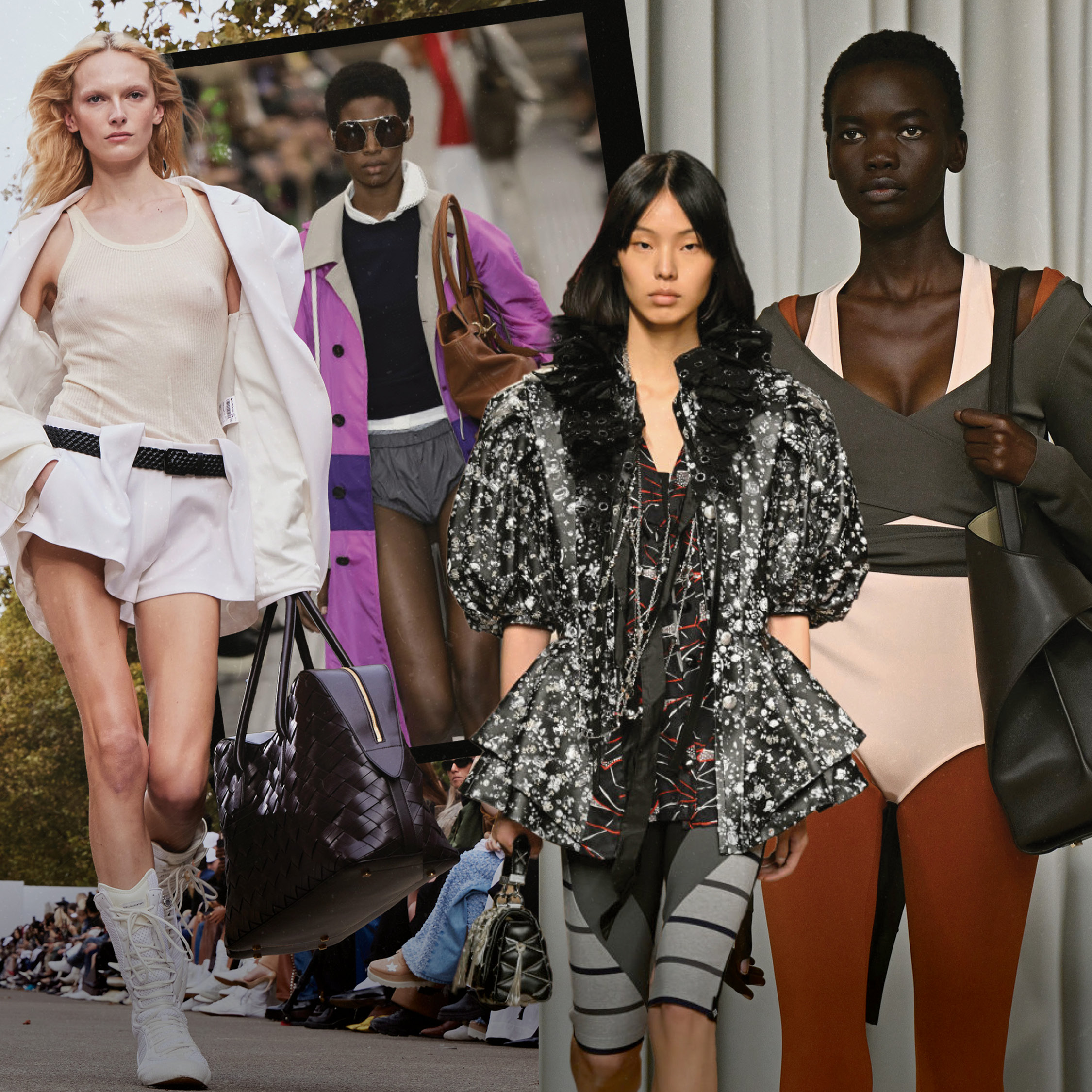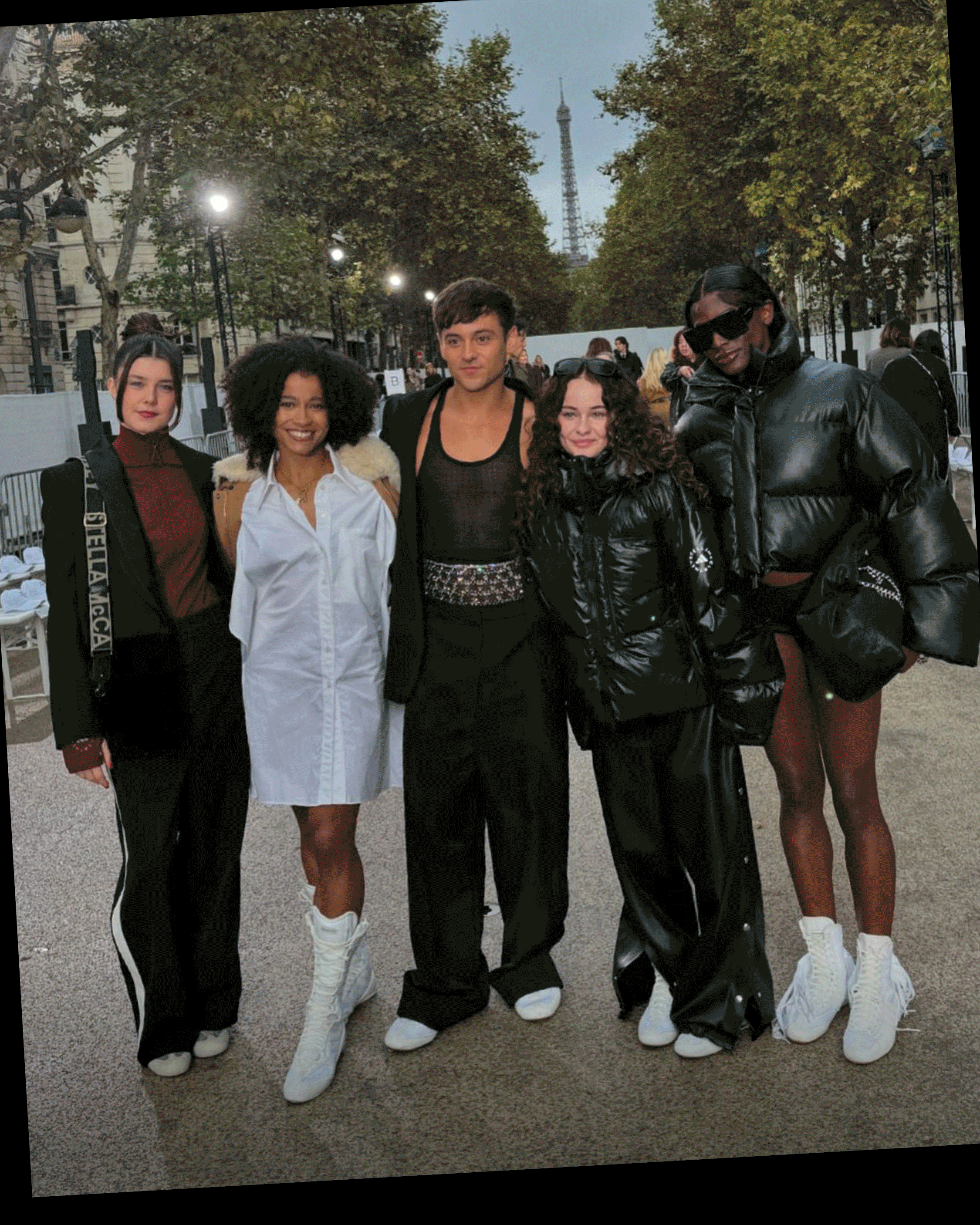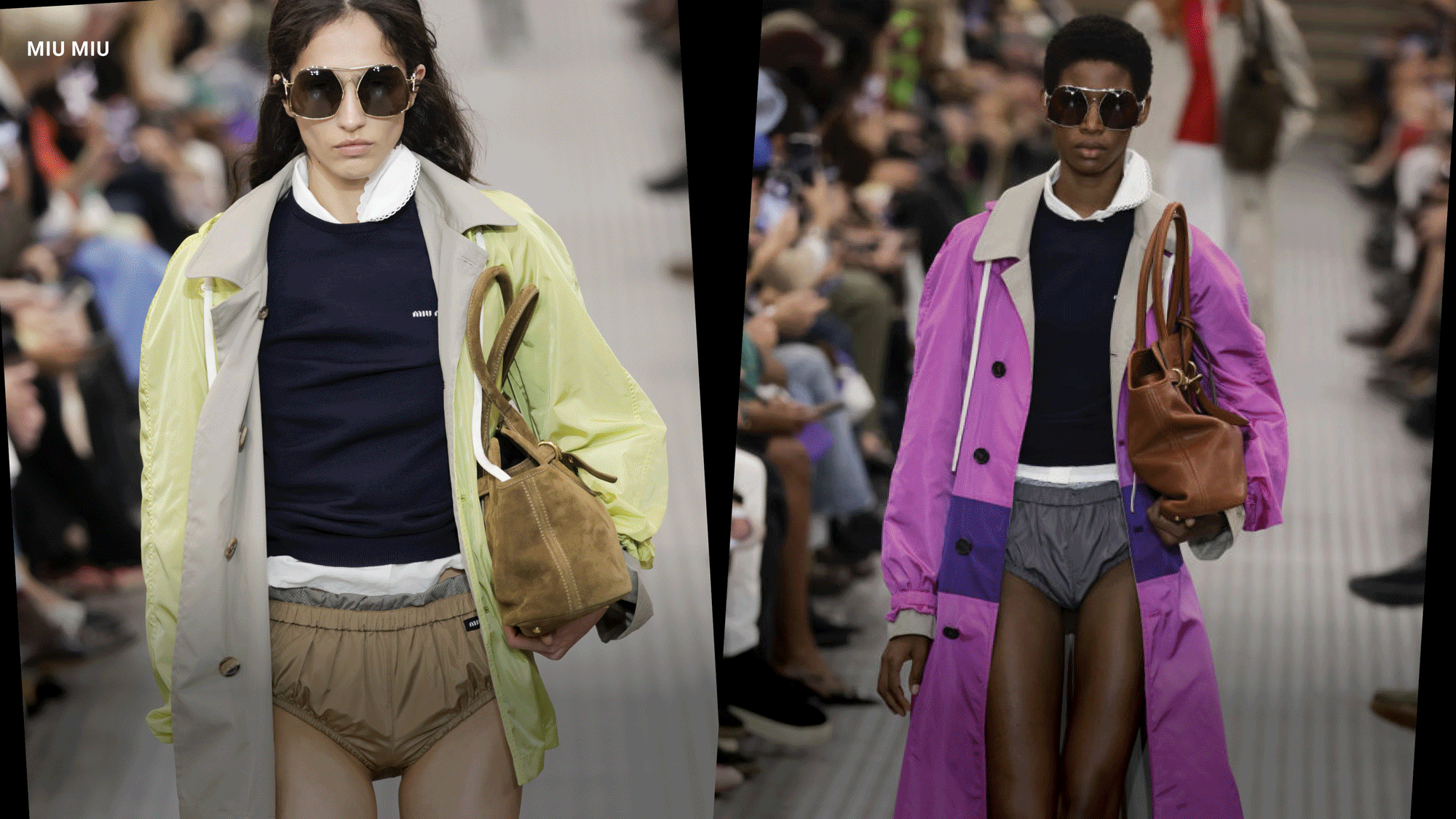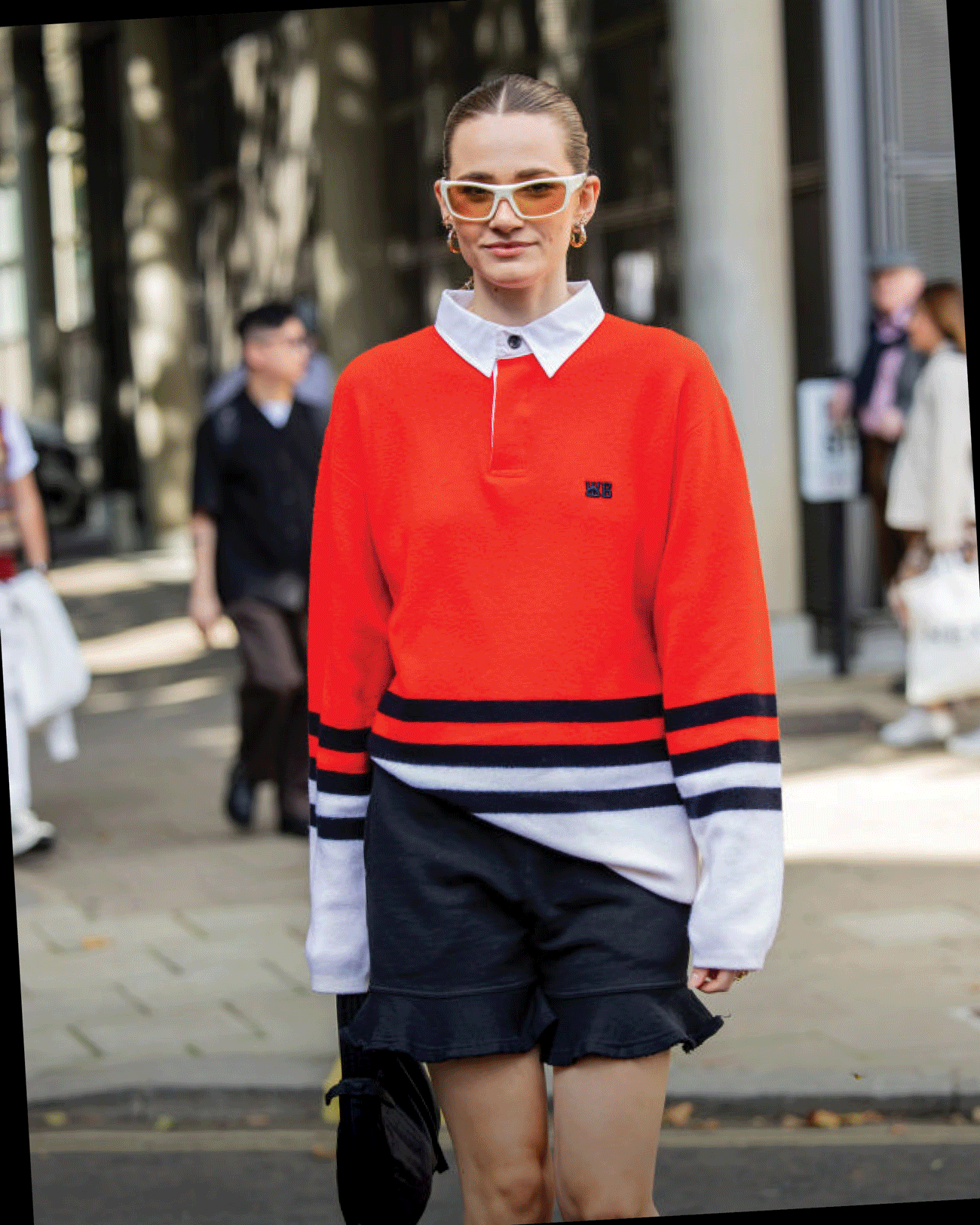
I’ll start this op-ed by pointing out the perhaps obvious: I’m not a Fashion Writer. Rather, I’m a Health and Sustainability Editor who, by proxy of working at Marie Claire UK, also has a pretty good insight into the fashion industry. Every year, come February and September, the team rallies to attend London, Paris and Milan Fashion Week, filling the office with tales of unforgettable moments, looks to remember, and trending takeaways upon their return.
Despite not attending, even I - a runner, Editor, and sustainable fashion lover constantly looking for ways to merge the intersection between my daywear and athleisurewear - noticed a clear trend from this year’s shows. And it was finally a trend that felt in my ballpark - because this season, athleisurewear has undoubtedly made its mark both on and off the runway.
I first noticed the trend after seeing the social coverage of the iconic Labrum London Fashion Week show, which “paid homage to the inspiration, togetherness and sense of belonging football provides across the world.” Not only was it the only fashion week show I’d ever seen held in a football stadium, but it was the first, to my knowledge, that incorporated a team’s football kit within its designs. Held at the Emirates Stadium, Arsenal and adidas made history with the first-of-its-kind runway, with professional footballer Declan Rice walking the pitchside catwalk and sporting legend Alex Scott in the audience.

The athleisurewear boom
And you can see why designers are choosing to diversify their offerings to incorporate more casual, multi-faceted styles. Athleisurewear has been growing in popularity for some time now, with the booming success showing no sign of slowing. According to a Global Athleisure Report from Allied Market Research last year, the athleisurewear sector is expected to reach $257.1 billion by 2026 - up from $155.2 billion in 2018 and growing a staggering 42% in the past seven years alone.
Labrum’s athleisurewear-focused looks were far from the only ones, too. Elsewhere in London, Simone Rocha incorporated tutus into her runway looks, Sinead Gorey’s models donned vintage Converse while parading around a basketball court, and Yuhan Wang channelled an American football, boxing-style aesthetic featuring repurposed silk boxing gloves, tailored football shirts, and linebacker shoulder pads.
Across the pond in Paris and Milan, the sporting influence was clear, too, with Ferragamo showcasing ballet-inspired wrap tops, bodysuits, and pastel tights and Louboutin showing off their new shoe designs in a heel-clad synchronised swimming routine at Paris's historic Art Deco pool, Piscine Molitor.
For MC UK Editor-in-Chief Andrea Thompson, who attended London, Paris and Milan Fashion Weeks, the highlight was the Dior show. “The Spring Summer 25 collection kicked off with a specular live archery display by Olympian Sofia Ginerva Gianni, who strode confidently down the runway in a loose mini skirt and leotard, showcasing her impressively strong-looking hamstrings and biceps. It celebrated female power and the freedom that comes with stretchy fabrics and flat shoes that allow for movement."

Progression or regression?
Of course, sporting influence on the runway isn’t necessarily anything new, but the influx of athleisurewear seen off the runway also ramped up a notch this year. My Instagram feed was inundated with attendees wearing low-waist, triple-stripe tracksuit bottoms, club rugby and football shirts, and zip-up track tops. Casual styles dominated, and made fashion week, for arguably the first time ever, feel like a space for me.
This was at a juxtaposition, of course, with the seemingly worryingly thin models that paraded on many of the catwalks this season. Just this week, The Times ran a piece titled “Skeletal Models and Fat Jabs: the Dark Side of the Catwalk.” And from colleagues who attended, conversations simmered all month about divisive weight loss jab Ozempic, with one model at the Namilia show in Berlin even donning an “I heart Ozempic” branded tee.
I’ve written extensively on the many dangers of Ozempic - every single expert I've spoken to has confirmed that it just hasn’t been around for long enough for us to know the long-term side effects yet - and further on the importance of celebrating all body types, skin colours, and disabilities. Our entire health offering, here at MC UK, celebrates mindful movement, eating to nourish your body, and finding calm in an often chaotic world. So what made me most sad about the images from this Fashion Month was that it felt like things were going backwards.
Huge steps forward have been made in the past few years, with publications swerving fad diet content in favour of research-backed, expert-approved health and wellbeing articles. Designers have made attempts to diversify their runway offering, too, with the MC UK Fashion Team applauding both Karolina Vitto and Michael Kors, in particular, for always going above and beyond to showcase real women on their catwalks. But sadly, this year, many catwalks featured the child-like, undernourished body ideals of the noughties.
The whole athleisure movement is meant to inspire and encourage healthy living, finding time for yourself in your day-to-day, and moving your body in a way that feels good for both body and mind. But seeing so many size zero models walk the shows in various sports-centric looks was, at times, a difficult watch. It also begs the question - do designers intend athleisurewear to be reserved exclusively for size zero women?
The stats back up a shift towards less size-inclusivity, too. One Vogue Business size inclusivity report from back in March already confirmed that fewer size-inclusive models were being included at Fashion Week shows, reporting an “incremental decrease in total size inclusivity across New York, London, Milan and Paris.” Their report found that, of nearly 9,000 looks across over 200 shows, only 0.8 per cent were a UK size 16+ and 3.7 per cent were a UK size 10 to 14, down slightly from the season before (0.9 per cent and 3.9 per cent respectively).

Representation off the runway
Safe to say, then, that the range of models at the shows were disappointingly lacking in diversity. That said, one thing I noticed (again, from my Instagram snooping) was what felt like an increase in the range of diverse body types represented in the audiences at the shows - and I don’t just merely mean thin vs plus size, either. More athletes than ever were invited to shows, no doubt in part thanks to the recent globally-watched spectacle that was the Paris Olympics. Take the all-star line up of Team GB adidas athletes in the audience for Stella McCartney show, as an example, including our cover star Daryll Neita and national treasure Tom Daley, or the Algerian boxer Imane Khalif attending the Bottega show.
What having these individuals in the audience reminds us is that we should be prioritising feeling strong, not skinny; that happiness often comes from movement, nourishing foods and plenty of sleep; and that nothing is more important than your health and wellbeing.
Fashion Writer Sofia Piza, who was at many of the shows, agrees, adding: “The inclusion of strong, honourable and truly iconic sportswomen and themes feels like a positive shift in mentality. Celebrating trailblazers from another industry who share common interests feels like a positive example of how fashion can be used as a means of uniting.”
I think the sports-inspired collections brought me joy because said clothes serve as a visual reminder that life isn’t about a number on a scale, how many calories you’ve consumed, the softness of your stomach, or squeezing into clothes that hurt your internal organs - rather, moving for joy, finding peace in movement, and wearing fashion-forward but also functional clothes that support you through just that.
I’m never going to be the size of those models on the runway - and, according to a recent World Population Review, neither will most women in the UK, with the average clothing size sitting at a 16. That said, I can wear the stripy shorts, pair my favourite Arsenal shirt with a pair of straight-leg jeans, and whack out my trusty adidas track top, making my day-to-day looks comfortable, functional, but also fashionable.
Now, question: will you be donning a football shirt?







